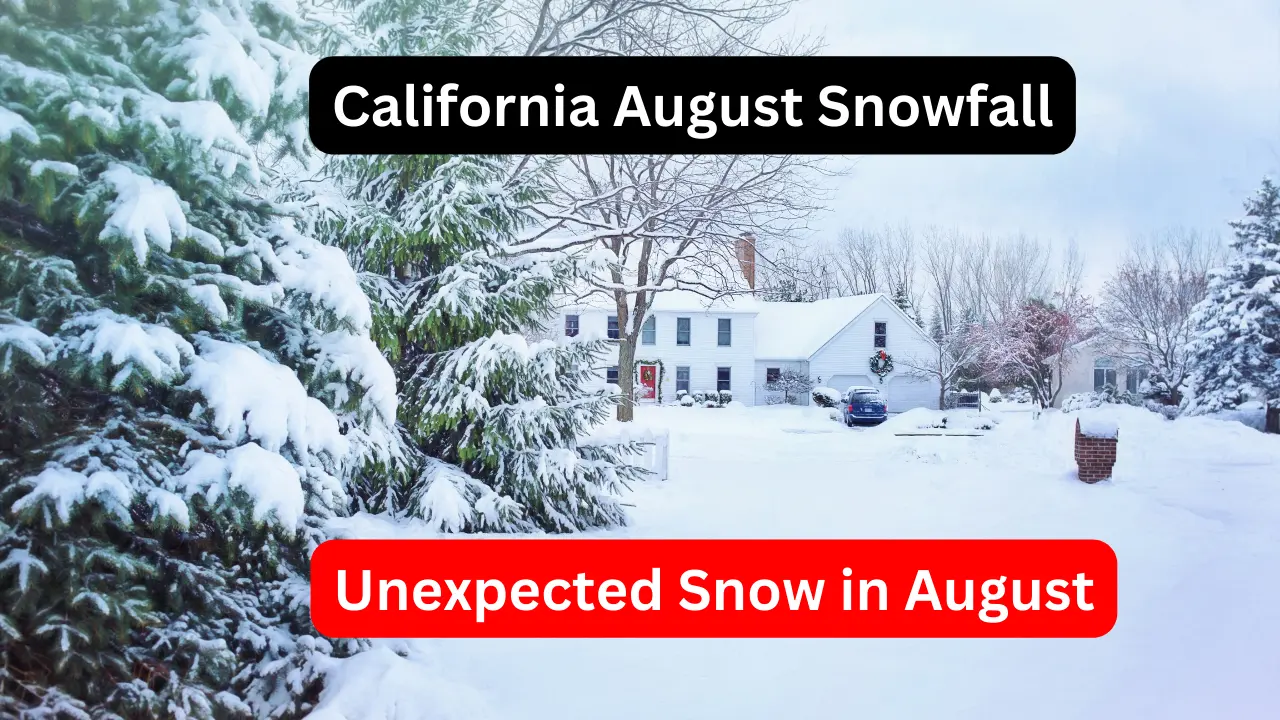
Unexpected Snow in August: California’s Rare Sierra Nevada Snowfall
Overview
Snowfall in August is a rare event, especially in places like California. However, the Sierra Nevada mountains have recently experienced an unusual snowfall this August. This blog post explores the surprising occurrence of snow in California during the summer, focusing on the Sierra Nevada region. We’ll dive into why this happened, the impact of the snowfall, and what it means for the state’s weather patterns.
[quads id=13]
Introduction
California is known for its sunny weather, especially during the summer. So, when snow falls in August, it’s a surprising event. The Sierra Nevada mountains saw an unexpected August snowfall, leaving many people in awe. This blog will break down the details of this unusual weather phenomenon, explaining it in simple terms that everyone can understand.
What Caused the August Snowfall in California?
August is usually a warm month in California, but this year, the weather took a surprising turn. The Sierra Nevada mountains, known for their winter snow, experienced snowfall in the middle of summer.
Unusual Weather Patterns
The snowfall was caused by an unusual cold front that moved into the region. This cold front brought temperatures down significantly, creating the perfect conditions for snow in the higher elevations of the Sierra Nevada.
1: Weather Conditions Leading to August Snowfall
| Factor | Description |
|---|---|
| Cold Front | A sudden drop in temperature due to a cold air mass moving into the region. |
| Moisture in the Air | The cold front brought moisture, which combined with low temperatures to form snow. |
| High Elevation | The Sierra Nevada’s high altitude made it more likely for snow to occur, even in summer. |
[quads id=13]
Impact of the Snowfall on California
Snowfall in August is not just a weather anomaly; it has significant effects on the region.
Impact on the Environment
The unexpected snow brought relief to some areas suffering from drought, providing much-needed moisture. However, it also disrupted wildlife and plant life, which were not prepared for the sudden change in weather.
Impact on Tourism
The snow attracted tourists who wanted to experience the rare event. Many people visited the Sierra Nevada mountains to see the snow, boosting the local economy.
1: Positive Impacts of August Snowfall
- Provided relief from drought conditions.
- Boosted tourism in the Sierra Nevada region.
- Offered a unique experience for visitors.
2: Challenges Caused by August Snowfall
- Disrupted wildlife and plant life.
- Caused road closures and travel delays.
- Unsettled local communities not expecting snow.
[quads id=13]

Sierra Nevada: A Closer Look at the Snow-Capped Mountains
The Sierra Nevada mountains are a major mountain range in California, stretching over 400 miles. They are known for their beautiful landscapes and winter snow, but snow in August is highly unusual.
Geography and Climate
The Sierra Nevada’s high elevation makes it prone to snow, but usually only in the winter. The mountains are a popular destination for skiing, hiking, and nature exploration.
2: Quick Facts About the Sierra Nevada Mountains
| Feature | Description |
|---|---|
| Elevation | Peaks reach up to 14,000 feet, with Mount Whitney being the highest point. |
| Climate | Typically cold in winter, warm in summer, with snow usually falling from November to March. |
| Tourist Attractions | Home to popular national parks like Yosemite and Sequoia, and winter sports resorts. |
California’s Changing Climate: What Does August Snow Mean?
The unexpected snowfall in California’s Sierra Nevada mountains raises questions about the state’s changing climate.
Is This a Sign of Climate Change?
Many experts believe that unusual weather events like this could be linked to climate change. The increase in global temperatures can lead to more unpredic weather patterns, including unusual snowfall.
3: Possible Signs of Climate Change in California
- Unseasonal weather patterns like August snowfall.
- Increased frequency of extreme weather events.
- Changes in plant and animal behavior due to climate shifts.
Long-Term Implications
While one snowfall doesn’t confirm climate change, it’s part of a larger pattern of unusual weather in California. It’s important to monitor these changes and understand their potential impact on the environment and daily life.
[quads id=13]
How to Prepare for Unusual Weather Events
Given the unpredictability of the weather, it’s important to be prepared for events like unexpected snowfall.
Tips for Residents and Visitors
- Stay Informed: Keep up with weather reports, especially if you live or are visiting high-elevation areas like the Sierra Nevada.
- Be Prepared: Carry winter gear like jackets and snow chains if you’re traveling in areas prone to sudden weather changes.
- Plan Ahead: If you’re planning a trip to the mountains, be aware of the possibility of snow, even in summer.
4: Essential Items for Unexpected Snowfall
- Warm clothing (jackets, gloves, hats)
- Snow chains for tires
- Emergency food and water supplies
- A por weather radio
Summary
The August snowfall in California’s Sierra Nevada mountains is a rare and unexpected event. It highlights the unpredictability of the weather and raises questions about climate change. While the snow brought some benefits, such as relief from drought and a boost in tourism, it also caused challenges for the environment and local communities. As California continues to experience unusual weather patterns, it’s important to stay informed and prepared.
[quads id=13]
Conclusion
Unusual weather events like August snowfall in the Sierra Nevada remind us of the importance of understanding and adapting to our changing climate. By staying informed and prepared, we can enjoy the beauty of nature while staying safe. Whether you’re a local resident or a visitor, being aware of the weather and its potential impacts can help you make the most of your time in California.
References
- National Weather Service: www.weather.gov
- California Department of Water Resources: www.water.ca.gov
- Sierra Nevada Conservancy: www.sierranevada.ca.gov
[quads id=13]
Authored by Anuradha Sharma, providing easy-to-read and informative content on California’s weather phenomena.
